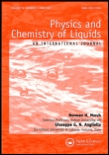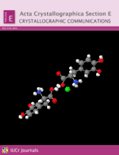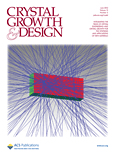
LIQUID CRYSTALS
Scope & Guideline
Advancing Knowledge in Liquid Crystal Applications
Introduction
Aims and Scopes
- Synthesis and Characterization of Liquid Crystals:
Research articles often discuss novel synthesis methods for liquid crystalline compounds, including detailed characterization of their mesomorphic properties and phase behaviors. - Electro-Optical Properties:
A significant portion of publications is dedicated to the investigation of the electro-optical properties of liquid crystals, including their performance in devices such as displays, sensors, and photonic applications. - Interdisciplinary Applications:
The journal highlights the use of liquid crystals in diverse fields such as display technology, sensors, photonics, and biomedical applications, showcasing their multifunctional capabilities. - Theoretical and Computational Studies:
Many articles contribute to the theoretical understanding of liquid crystalline phases and transitions, employing computational methods to predict behaviors and properties of liquid crystals. - Nanocomposites and Hybrid Systems:
The incorporation of nanoparticles and other materials into liquid crystals to enhance performance or introduce new functionalities is a prominent research area in the journal. - Smart and Responsive Materials:
Research on liquid crystals that respond to external stimuli (e.g., light, temperature, electric fields) is emphasized, contributing to the development of smart materials and devices.
Trending and Emerging
- Nanoparticle-Doped Liquid Crystals:
There is a rising trend in the study of liquid crystals doped with various nanoparticles to enhance their electro-optical properties and to develop multifunctional materials for advanced applications. - Smart Windows and Energy-Efficient Technologies:
Research focusing on liquid crystal applications in smart windows and energy-efficient technologies is gaining momentum, driven by the demand for sustainable materials and energy-saving solutions. - Liquid Crystals in Biosensing:
The use of liquid crystals for biosensing applications, particularly in label-free detection methods, is an emerging area, reflecting the integration of liquid crystal technology with biomedical diagnostics. - Machine Learning and AI in Liquid Crystal Research:
The application of machine learning and artificial intelligence techniques to analyze liquid crystal textures and properties is becoming more popular, indicating a shift towards data-driven approaches in materials science. - Thermotropic and Lyotropic Liquid Crystals:
There is a notable increase in research on thermotropic and lyotropic liquid crystals, especially in relation to their unique phase behaviors and potential applications in responsive materials.
Declining or Waning
- Traditional Display Technologies:
While displays remain a core application area, there is a noticeable decline in papers focused solely on conventional LCD technologies, as research shifts towards more advanced and multifunctional applications. - Basic Mesomorphic Studies:
There appears to be a decreasing emphasis on purely fundamental studies of mesomorphic behavior without application context, as the field moves towards integrating findings with practical applications. - Low-Dimensional Liquid Crystals:
Research focusing specifically on low-dimensional liquid crystals has seen reduced frequency, possibly due to the increasing complexity and interest in more advanced materials and hybrid systems. - Chiral Liquid Crystals without Functionalization:
Papers discussing chiral liquid crystals in isolation, without exploring their functional properties or applications, are becoming less common, indicating a shift towards more application-oriented research.
Similar Journals

PHYSICS AND CHEMISTRY OF LIQUIDS
Exploring the Depths of Liquid InteractionsPHYSICS AND CHEMISTRY OF LIQUIDS is a distinguished academic journal dedicated to the exploration and advancement of liquid-state scientific research within the fields of physics and chemistry. Published by Taylor & Francis Ltd, this esteemed journal features contributions that delve into various aspects of condensed matter physics, materials chemistry, and characteristics of electronic, optical, and magnetic materials. With an ISSN of 0031-9104 and an E-ISSN of 1029-0451, it has been disseminating valuable knowledge since its inception in 1968. The journal’s commitment to academic rigor is reflected in its current Q3 rankings across multiple categories, including condensed matter physics and physical chemistry. Although not open access, the journal remains a crucial resource for researchers, professionals, and students seeking to stay at the forefront of liquid research advancements. Its publications contribute significantly to the understanding of the interactions and behaviors of liquid materials, making it an indispensable asset in both academic and industrial contexts.

Acta Crystallographica Section E-Crystallographic Communications
Bridging theory and practice in the world of crystal science.Acta Crystallographica Section E-Crystallographic Communications is a premier academic journal dedicated to the field of crystallography, published by the International Union of Crystallography. With an Open Access model established since 2008, this journal fosters the rapid dissemination of significant research findings in crystallographic studies, offering researchers and professionals the ability to freely share and access critical data. The journal is recognized for its contribution to various interdisciplinary categories, achieving notable standings in the 2023 rankings, categorized in the Q3 quartile in Chemistry (miscellaneous) and Materials Science, and the Q4 quartile in Condensed Matter Physics. By bridging the gap between theoretical and practical aspects, Acta Crystallographica Section E serves as a vital resource for those looking to deepen their understanding of crystallographic phenomena and its applications in science and engineering. The journal maintains its commitment to quality and innovation in research, ensuring a vibrant platform for scholarly communication within the scientific community.

CRYSTAL GROWTH & DESIGN
Innovating the Future of Materials ScienceCRYSTAL GROWTH & DESIGN, published by the American Chemical Society, is a premier journal dedicated to the interdisciplinary study of materials science, condensed matter physics, and miscellaneous chemistry. With an ISSN of 1528-7483 and E-ISSN of 1528-7505, this journal provides a vital platform for the dissemination of innovative research findings from 2001 through 2024, reflecting the dynamic advancements in crystal growth and design methodologies. It is recognized for its impact in the field, earning a distinguished placement in the Q2 quartile across categories of Chemistry, Condensed Matter Physics, and Materials Science for 2023. Researchers engaging with CRYSTAL GROWTH & DESIGN will find a wealth of peer-reviewed articles encompassing cutting-edge experimental techniques, theoretical frameworks, and application-oriented studies. Although not an open-access journal, it remains a critical resource for academics, professionals, and students aiming to enhance their understanding of crystal growth processes and material functionality, with Scopus rankings reflecting its reputable authority within the scientific community.

Acta Crystallographica Section B-Structural Science Crystal Engineering and Materials
Advancing the frontiers of structural science and materials innovation.Acta Crystallographica Section B: Structural Science, Crystal Engineering and Materials, published by the International Union of Crystallography, stands as a pivotal resource for researchers and professionals in the fields of materials science, crystal engineering, and structural biology. With an e-ISSN of 2052-5206, this journal is recognized for its contributions to advancing knowledge on the structural aspects of materials, drawing significant interest from the Q2 category in several disciplines, including Atomic and Molecular Physics and Materials Chemistry. As the field evolves through innovative research approaches and methodologies, the journal actively covers developments within the scope of materials synthesis, characterization, and application in various sectors including medicine and electronics. Though not an open-access journal, it is entangled in the scientific discourse, ensuring that key studies are accessible to academic institutions and professionals globally. With a commitment to excellence, its impact across multiple quartile rankings signifies its influence and importance for scholars eager to contribute to cutting-edge research.

Materials Letters-X
Connecting Researchers Through Open Access ExcellenceMaterials Letters-X, published by ELSEVIER, is an esteemed open-access journal dedicated to the rapid communication of research in the fields of Condensed Matter Physics, Materials Science, Mechanical Engineering, and Mechanics of Materials. Launched in 2019, this journal has quickly established itself within the academic community, achieving Q3 quartile rankings in several categories according to the 2023 metrics. The journal's impactful contributions are reflected in its Scopus rankings, notably within Mechanical Engineering (Rank #308) and Mechanics of Materials (Rank #199). The open-access model promotes widespread dissemination and accessibility, ensuring that cutting-edge advancements in material science are readily available to researchers, professionals, and students worldwide. As it continues to grow, Materials Letters-X aims to inspire innovation and collaboration across disciplines, making it a pivotal resource for those engaged in material research and applications.

ACTA PHYSICA POLONICA A
Connecting Scholars with Cutting-Edge DiscoveriesACTA PHYSICA POLONICA A is a distinguished peer-reviewed journal published by the Polish Academy of Sciences Institute of Physics, offering a platform for disseminating cutting-edge research in the field of physics and astronomy. With an ISSN of 0587-4246 and an E-ISSN of 1898-794X, this journal has been a staple for scholars since its inception, converging its publication years from 1996 to 2024. Despite its current Q4 classification in the Physics and Astronomy (miscellaneous) category, ACTA PHYSICA POLONICA A provides valuable insights and breakthroughs addressing various aspects of general physics. Researchers, professionals, and students will find a wealth of knowledge within its pages, even as it operates in an evolving academic landscape. While subscription options exist, the journal aims to foster collaboration and knowledge exchange in the physics community, making it a vital resource for those seeking to stay at the forefront of research advancements.

CRYSTENGCOMM
Exploring the frontiers of crystal engineering and innovation.CRYSTENGCOMM is a distinguished journal published by the Royal Society of Chemistry, dedicated to advancing the field of crystallization and crystal engineering. With its impact factor consistently among the top tier in its category, CRYSTENGCOMM serves as an essential platform for researchers, professionals, and students in Chemistry, Condensed Matter Physics, and Materials Science. The journal has successfully maintained its relevance and influence since its inception, showcasing pioneering research from 1999 to 2024, with a commendable Q2 ranking in the latest evaluations. This accessibility to crucial developments in crystallization facilitates knowledge transfer across disciplines and enhances collaboration within the scientific community. Although it operates under a subscription model, the journal remains committed to disseminating cutting-edge research and fostering innovation in the field. For more information or to submit your research, please visit the Royal Society of Chemistry's website.

GIANT
Pioneering Research for a Sustainable Future.GIANT is a pioneering open-access journal published by Elsevier that has rapidly established itself as a cornerstone in the fields of Chemistry, Materials Chemistry, Polymers and Plastics, and Surfaces, Coatings and Films. Since its inception in 2020, GIANT has been committed to disseminating cutting-edge research and facilitating scholarly communication in these dynamic areas. With a remarkable Q1 ranking across multiple categories, the journal reflects an impressive impact factor within the academic community, evidenced by its standing in the top 82nd percentile in several Scopus classifications. Based in the Netherlands at Radarweg 29, Amsterdam, GIANT embraces a global audience through its open-access model, ensuring that groundbreaking discoveries are accessible to researchers, professionals, and students alike. Fostering innovation, the journal strives to shape the future of materials science and chemistry, making significant contributions in an era characterized by rapid scientific advancement.

CRYSTALLOGRAPHY REPORTS
Exploring the Foundations of CrystallographyCRYSTALLOGRAPHY REPORTS (ISSN: 1063-7745, E-ISSN: 1562-689X), published by PLEIADES PUBLISHING INC, is a pivotal journal in the fields of chemistry, condensed matter physics, and materials science. Established in 1996 and continuing through to 2024, it serves as a vital resource for researchers and professionals seeking to disseminate and engage with contemporary advancements in crystallography. While currently not classified as open access, the journal's rigorous peer-review process ensures the publication of high-quality research, making it a respected entity within the academic community. With a categorization in the Q4 quartile for its respective fields and notable Scopus rankings, CRYSTALLOGRAPHY REPORTS is committed to fostering an understanding of crystallographic techniques and their application across scientific disciplines. This journal is essential for those looking to stay abreast of the latest findings and methodologies in crystallography, providing a platform for impactful discussions and collaborations.

Journal of the Korean Crystal Growth and Crystal Technology
Exploring Innovations in Crystal Growth TechnologyJournal of the Korean Crystal Growth and Crystal Technology, published by the Korean Association for Crystal Growth, Inc, serves as a significant platform for the dissemination of research related to crystal growth and technology, emphasizing advancements in the field within the context of Korean and global scientific communities. With its ISSN 1225-1429 and E-ISSN 2234-5078, this journal invites contributions that explore the theoretical and practical aspects of crystal growth, including material science, physics, and engineering applications. Although specific metrics such as HIndex or Scopus ranks are currently unpublished, the journal is poised to impact the field significantly, appealing to researchers, professionals, and students seeking to expand their knowledge and expertise. By fostering collaboration and sharing innovative findings, the Journal of the Korean Crystal Growth and Crystal Technology is a valuable resource for those aiming to contribute to this evolving discipline.